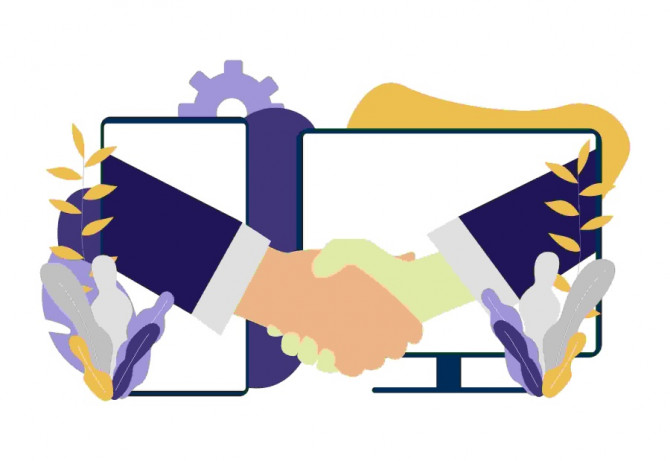How to build trust when selling virtually
- How has the coronavirus outbreak changed the dynamics of trust building forever?
- What is a swift trust theory?
- Do the role-based interaction lead to more rapid development of trust than person-based interaction?

Traditionally, sales professionals developed trust with buyers over an extended length of time, as they engaged with customers, set expectations, fulfilled promises, and delivered value. However, the sharp increase in remote selling through virtual collaboration platforms, driven by the necessities of the COVID-19 outbreak, have changed the dynamics of trust building forever. According to a McKinsey study1, almost 90 percent of sales have moved to web-based videoconferencing communications since the start of the pandemic. As a result, salespeople must now develop trust and credibility rapidly, under circumstances that do not allow for long timelines or in-person meetings.
A team of social psychologists at Stanford University evaluated how people develop trust over virtual media. In doing so, they developed an idea called swift trust theory, based on their discovery that fast-forming groups can quickly develop the trust that many originally believed was only possible among those with long, shared histories.2 However, the Stanford researchers explain that this is “a form of trust that has some unusual properties”.
The swift trust model is not simply an accelerated version of conventional trust building. Sales professionals must adapt their behavior to align with three key principles of swift trust to sell in a virtual setting. With a clear understanding of these principles, sales professionals can embrace the new challenge of creating trust over a short period and a long distance.
Prepare with a role-based focus
The Stanford researchers cite that “role-based interaction leads to more rapid development of trust than does person-based interaction”. In other words, trust is more likely to emerge when there is a clear understanding of the roles within the group. This finding has implications for sales professionals who must engage with various stakeholders in a buying team. By understanding the role of each decision maker, the sales professional will be better equipped to speak to individualized concerns.
The Stanford researchers note that placing a focus on each person’s role will sharpen the contrast between stakeholders, so that everyone is clear on what is expected of the others. For example, a sales professional will need to address a procurement professional differently from a quality control manager. The procurement professional is tuned to factors like cost and ROI. In contrast, the quality control manager will need to see the sustainability of the solution. By clearly defining the differences between each stakeholder, the sales professional will be in a better position to address each one. The key is to remember that the “blurring of roles will lead to a slower build of trust”, according to the researchers.
This blurring occurs when the sales professional has not taken the necessary steps to prepare for the virtual meeting. In a virtual setting, it is easy to resort to a cursory review of the stakeholders prior to a call. This tendency is common because a virtual setting provides a “safe distance” that appears to lack the intensity of in-person interactions. Trust building requires sales professionals to be aware of this inherent tendency and overcome it with more thorough preparation. Doing so means taking the time to understand the different roles and their responsibilities. This approach allows the sales professional to both adjust the messaging to each stakeholder and use valuable call time to ask the deeper questions that cannot be answered with pre-call research.
Wykorzystałeś swój limit bezpłatnych treści
Pozostałe 57% artykułu dostępne jest dla zalogowanych użytkowników portalu. Zaloguj się, wybierz plan abonamentowy albo kup dostęp do artykułu/dokumentu.






 Zaloguj się
Zaloguj się








